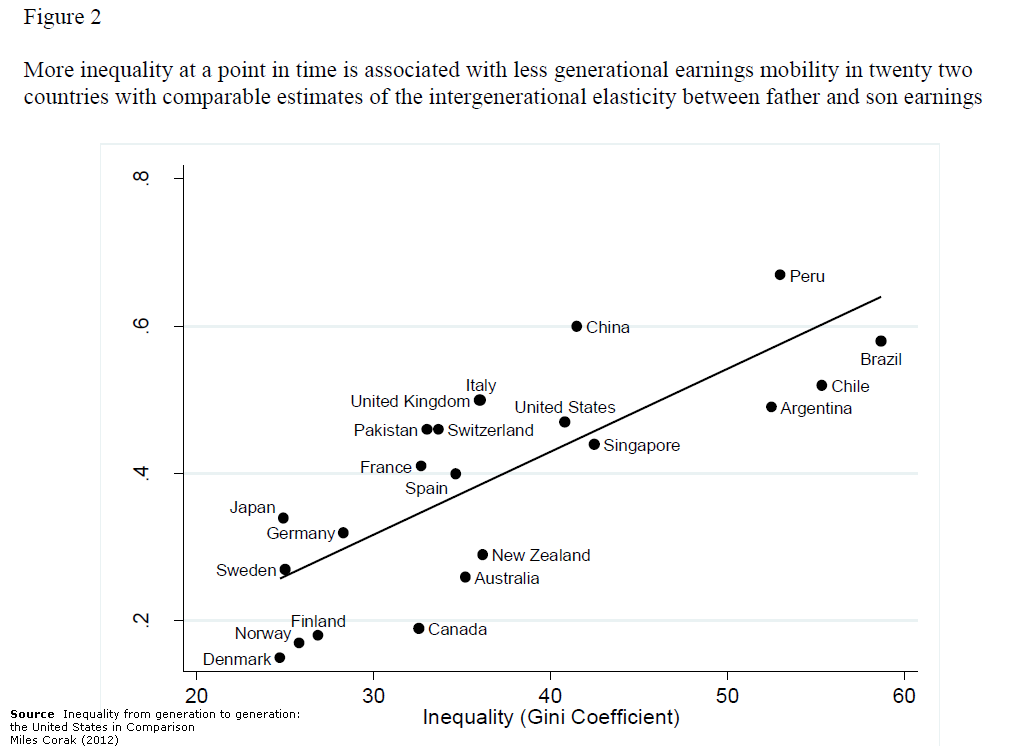This morning, Tuesday, I was at a meeting in Juan les pins in the south of France. It took place at the villa where Scott and Zelda Fitzgerald lived at the beginning of the 1920s’. The meeting was organized by the Caisse d’Epargne Côte d’Azur and the Caisse d’Epargne Provence Alpes Corse (two important banks in the BPCE banking network)
For an economist, Scott Fitzgerald was the author of “The Great Gatsby” a book on the American bourgeoisie with the character of Gatsby who was immensely rich.
In 2012, Alan B. Krueger was the head of the Council of Economic Advisers of Barak Obama. In a speech he spoke of the Gatsby curve. The source of this curve was a paper written by Miles Corak.
This curve reflects a link between income inequality and intergenerational mobility. The question asked is the relation between income inequality and the possibility for a generation to have an income that could be independent from the previous one.
In other words, do higher income inequalities imply a stronger social rigidity between generations? If this is the case then depending on where you’re born is major to your life profile. Your income will be dependent on your parents’ income and your possibility to move along the social ladder is reduced.
Therefore, a policy that fights income inequalities can increase the social mobility, increasing the capacity for everyone to define his own trajectory.
The graph below comes from Corak’s paper. The relation between income inequalities and intergenerational mobility can be understood as: more income inequalities are consistent with weaker intergenerational mobility. Nordic countries have low income inequalities and every citizen’s trajectory is dependent on himself and not on the situation of the previous generation. This is clearly not the case in Latin America.



